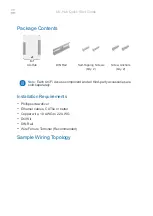
6 - 30 6 - 30
MELSEC-Q
6 DEDICATED INSTRUCTIONS
(4) Whether the REQ instruction is being executed or has been completed normally
or abnormally can be checked with the complete device (D2) or completion status
display flag ((D2) + 1) designated in the set data.
(a) Completion device (D2)
Turns on at the END processing of the scan where the REQ instruction is
completed, and turns off at the next END processing.
(b) Status display device at completion ((D2) + 1)
Turns on and off depending on the completion status of the REQ instruction.
Normal completion: Stays off and does not change.
Abnormal completion: Turns on at the END processing of the scan where
the REQ instruction is completed, and turns off at
the next END processing.
[Operation of the local station when the REQ instruction is being executed]
Sequence program
REQ instruction
OFF
ON
REQ instruction
execution is completed
END
processing
Send/receive
instruction flag
OFF
ON
Completion device
Status display device at
completion
Abnormal
completion
Normal
completion
One scan
OFF
OFF
ON
ON
END
processing
END
processing
END
processing
(5) When the instruction is executed using J.REQ/G.REQ, the next write processing
is executed in succession after one write processing is completed while the write
command is on.
When the instruction is executed using JP.REQ/GP.REQ, the write processing is
executed only once when the write command switches from off to on (at rise).
Errors
(1) When a dedicated instruction completes abnormally, the abnormal completion signal
(D2) + 1 turns on and the error code is stored in the completion status (S1) + 1.
See the following manuals regarding the error code, check the errors and take
corrective actions.
<Error codes>
4FFF
H
or less
: QCPU (Q Mode) User's Manual (Hardware Design,
Maintenance and Inspection)
C000
H
or higher: Section 11.3.3 of the Q Corresponding Ethernet Interface
Module User's Manual (Basic)
















































